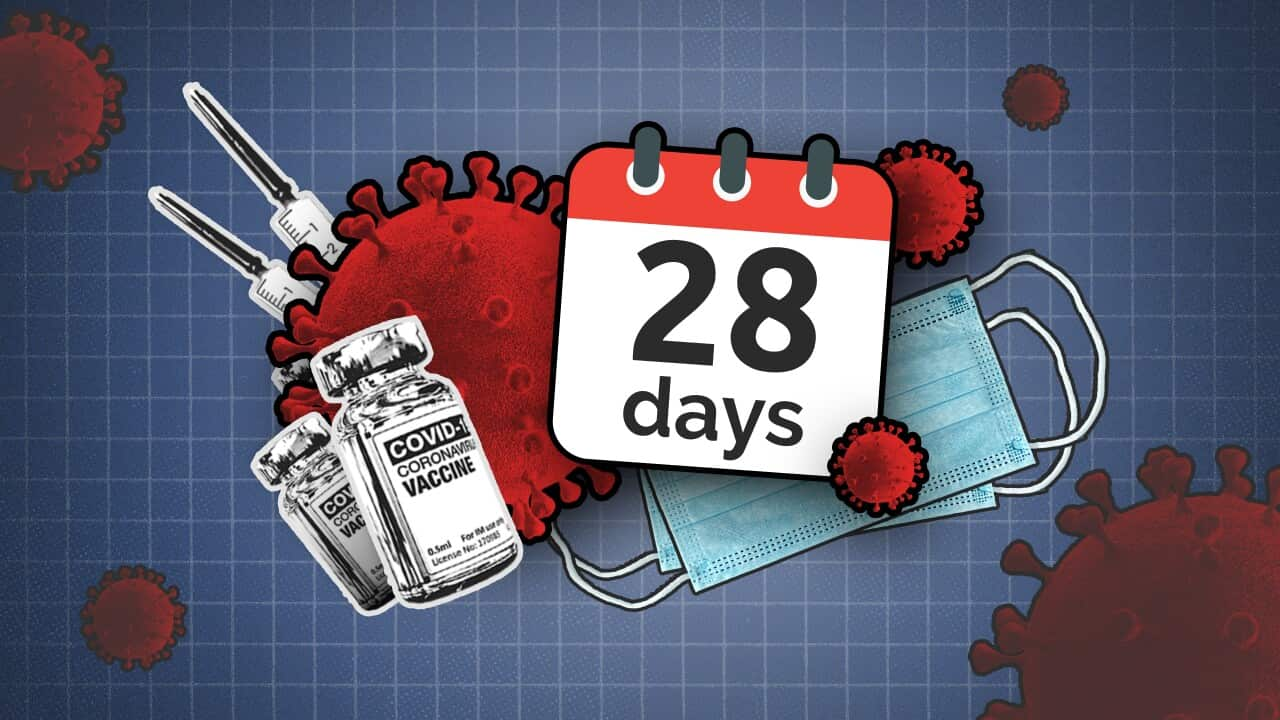Key Points
- The Omicron subvariants - termed BA.4 and BA.5 - are increasing the chances of reinfection.
- A person can now be re-infected just four weeks after contracting COVID-19. The previous advice was that re-infection was unlikely to occur within 12 weeks.
Costa Xarras was struck down by his first bout of COVID-19 in late September last year, and caught the virus again just six months later in March.
As a fresh wave of highly infectious Omicron subvariants starts sweeping through Australia, the 27-year-old Sydneysider is not enthused about the prospect of a third round of COVID.
"I kind of felt like I was never going to get it again, which is probably a silly way of thinking. And I obviously got it again," he said.
"Fingers crossed I don't get it for a third time. I really don't want to get it again."
The Omicron subvariants - termed BA.4 and BA.5 - have similar mutations that make it harder for the body's immune system to recognise them. This increases the chance that people who have previously contracted the virus, could be re-infected again.
"The first dose I got was towards the end of September, I'm pretty sure it was the Delta variant. For me personally it was quite harsh - body aches, migraine, a lingering cough for a month and a half or so after that," Mr Xarras said.

Mr Xarras said he was lucky to have recovered from both bouts of COVID with no long-term health impacts. Credit: Supplied.
"It was the first bout that really kind of shook me."
The federal government doesn't currently collect data on the number of COVID reinfections in Australia. But health officials have recently updated their advice regarding the timeframes for Omicron re-infection.
A person can now be re-infected just four weeks after contracting COVID-19. The previous advice was that re-infection was unlikely to occur within 12 weeks.
There are fears that repeated infections with COVID-19 could increase the risk of long-term health effects, such as debilitating long COVID.

Authorities are strongly recommending that people wear face masks to limit the spread of the Omicron sub-variants. Source: AAP / AAP Image/Scott Barbour
"I don't really have any ongoing symptoms. Each time I had it I took it pretty easy for a month or so after. I wanted to monitor if there was anything affecting my recovery.
"But I'm back to normal, playing basketball. Thankfully no real struggles there."
Fingers crossed I don't get it for a third time. I really don't want to get it again.Carlos Xarras
And he said he would be taking the necessary measures to try and avoid COVID a third time.
"I had that flu that was going around that knocked me out. So hopefully, COVID three doesn't exist for me, but you know, knock on wood, just take the right precautions ... do what you need to do to get jabbed and just be cautious, you know."
CSIRO scientist Dr Daniel Layton said the new Omicron subvariants had a "substantial ability" to evade the body's immune response - even if you've already been infected.
"We know with these subvariants that they are definitely taking over from the previous Omicron variants, and that's likely to be in part due to the change in immune response," he said.
"Certainly the speed at which those subvariants are growing means it's likely they have an advantage."
But Dr Layton said there was limited data on whether the new subvariants caused more severe disease.
"When we go through a wave, there is going to be more hospitalisations - purely because of the number of people infected," he said.
"But when you look at hospitalisations per 100 infections, that ratio doesn't appear to have changed."
New subvariants are also just around the corner. The BA.2.75 subvariant - also called the Centaurus subvariant - is currently spreading rapidly through parts of India.
While research on BA.2.75 is limited, there are fears it could be even more contagious than BA.5.
What's the latest COVID-19 health advice?
to reduce hospitalisations and deaths across the country.
Chief medical officer Paul Kelly said on Tuesday that face masks should be worn "in crowded, indoor environments, including on public transport".He said employers should revisit their work health and safety frameworks, including advice to employees to work from home where they can.
For those who are yet to get their third COVID-19 vaccine dose, authorities have warned that only having the first two vaccines is no longer enough to protect them against COVID-19.
More than half a million Australians have had a , but rates for the first booster are still lagging, with only 70.9 per cent of the population having received their third dose.
Right now, all Australians over the age of 30 are eligible to receive their fourth dose and, if you're over the age of 50, it is highly recommended.
for the latest health advice about COVID-19, including and the current situation in Australia.




